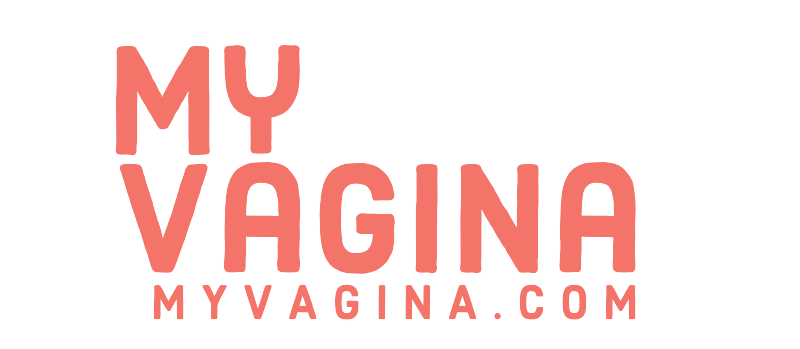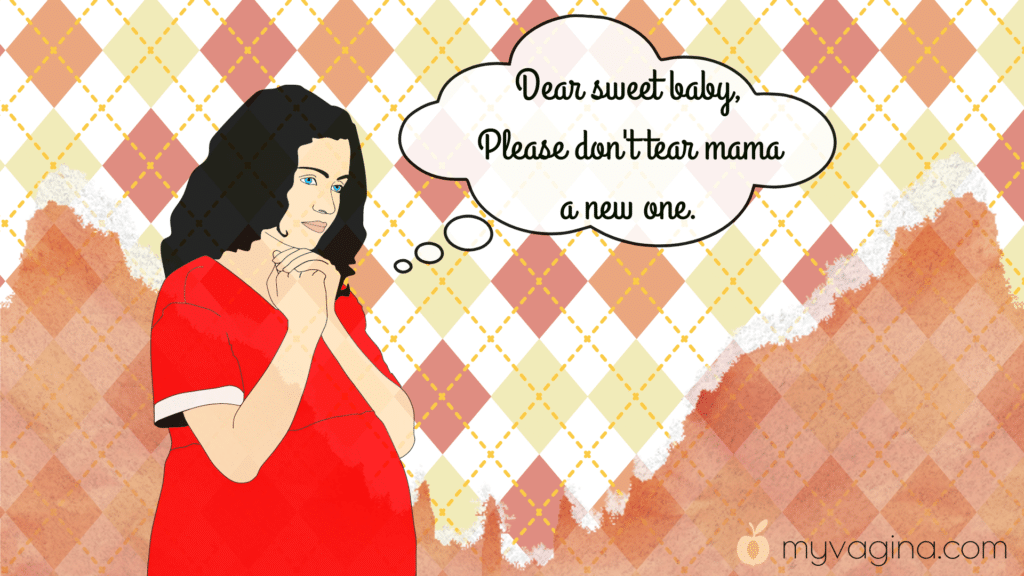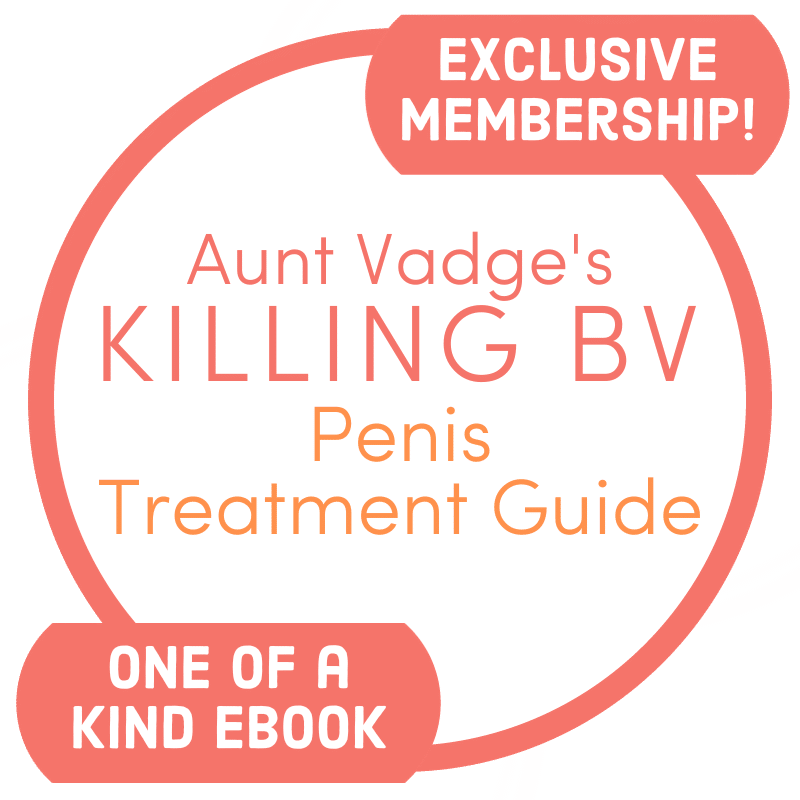A great many articles have been written on vaginal tears, cuts and damage during childbirth, so here is a small, friendly, coffee-and-biscuit chat about tears that can occur whilst giving birth.
There are preventative steps to try to avoid tearing, which certainly can’t hurt to try. There are certain circumstances that increase risk of tearing, including the baby being large or having a large head, weak tissue, and vacuum extractions1.
Tips for preventing vaginal and perineal tears during childbirth2:
- Be healthy1. Having healthy, strong flesh means you have less chance of tearing. This isn’t a flippant comment: getting enough vitamin C for collagen production, protein for building muscle and skin, and zinc to hold it all together is critical. See a nutritionist if you don’t know what you’re doing.
- Perineum massage from 34 weeks3. This can be done by a partner or therapist, as you may not be able to reach.
- The epi-no device, which is a daily vaginal pump that prepares your vaginal muscles and skin to stretch during childbirth.
- Water births have been shown to reduce the incidence of tearing, or of serious tears. The water softens your skin, making it stretch more easily.
- Give birth in an upright posture. If you must lie down (due to epidural or other reason), try to lie on your left with support with your right leg in the air, bending at the hip and knee.
- Your midwife knows what she’s doing, so let her talk you through crowning to keep you in tact.
What if I did tear during labour?
Tearing is common, and they come in classifications. Your doctor will advise you of your degree, and explain how to take care of it. If you’re not informed, ask, and make sure you have clear care instructions.
The graze.
This is a small injury to the vagina, perineum and/or labia where the skin has split. The graze doesn’t usually require stitches, but sometimes it can be recommended to help healing.
It is advisable to shower every time you need to urinate for a few days, or pour warm water over your vulva to dilute acidic urine and reduce discomfort. Keep a bucket and a cup next to the toilet.
Alternatively, it has been suggested to use a urinary alkaliser such as bicarbonate soda (baking soda).
A vaginal wall tear
With a vaginal wall tear, the perineum remains intact. A vaginal wall tear may need stitches, but you are unlikely to notice as they are inside the vagina where nerve endings are scant.
First degree perineal tear
A first degree perineal tear is a tear of the perineum, but the tear doesn’t go through to the muscle. The first degree perineal tear might require stitches.
Second degree perineal tear
The tear in your perineum goes through to the muscle layer, which will need stitches.
Third degree perineal tear
There are three different varieties of the third degree perineal tear: 3a, 3b and 3c. The tear goes all the way through the muscle and into the muscle fibres that make up the anal sphincter.
3a. perineal tear
Less than a quarter of the anal sphincter is damaged.
3b. perineal tear
Less than half of the anal sphincter is damaged.
3c. perineal tear
75 per cent of the anal sphincter fibres are damaged. This will likely be stitched up where you are, but you will need to see a dietician and physiotherapist to help you out in the coming weeks while it heals.
Fourth degree perineal tear
This is the worst perineal tear you can get, and will require surgical support. A fourth degree perineal tear means the whole section from the vagina to the anus is torn open. A colorectal surgeon may be required after this type of tear.
And a full-time nanny, because you won’t be walking around much. Once you’ve sustained that level of damage, it is often inadvisable to attempt another vaginal birth again because of the weaknesses.
Tips on dealing with vaginal and perineal tears after a vaginal birth
Keep your wound dry and clean while it heals to avoid a vaginal infection. Doctors will normally use a dissolvable stitch, so you won’t have to get them removed. Change your pads regularly and shower when you can.
Make sure if you are in any pain that seems unexpected or unacceptable, tell someone and be examined. Don’t take any risks.
Sex is off the cards until you’re fully healed and ready, and that is likely to be longer than the 6-8 weeks it takes your vagina to heal.
Check out the tips on keeping your vagina healthy.
References4,5
- 1.Jansson MH, Franzén K, Hiyoshi A, Tegerstedt G, Dahlgren H, Nilsson K. Risk factors for perineal and vaginal tears in primiparous women – the prospective POPRACT-cohort study. BMC Pregnancy Childbirth. Published online December 2020. doi:10.1186/s12884-020-03447-0
- 2.Okeahialam NA, Sultan AH, Thakar R. The prevention of perineal trauma during vaginal birth. American Journal of Obstetrics and Gynecology. Published online August 2023. doi:10.1016/j.ajog.2022.06.021
- 3.Venugopal V, Deenadayalan B, Maheshkumar K, et al. Perineal Massage for Prevention of Perineal Trauma and Episiotomy During Labor: A Systematic Review and Meta-analysis. JFRH. Published online September 11, 2022. doi:10.18502/jfrh.v16i3.10575
- 4.Goh R, Goh D, Ellepola H. Perineal tears – A review. Aust J Gen Pract. Published online January 1, 2018:35-38. doi:10.31128/afp-09-17-4333
- 5.Cakwira H, Mukengere M, Lucien B, et al. The clinical characteristics of perineal tears: A study carried out on 14 pregnant women in a tertiary center: Case series. Annals of Medicine & Surgery. Published online October 2022. doi:10.1016/j.amsu.2022.104432





